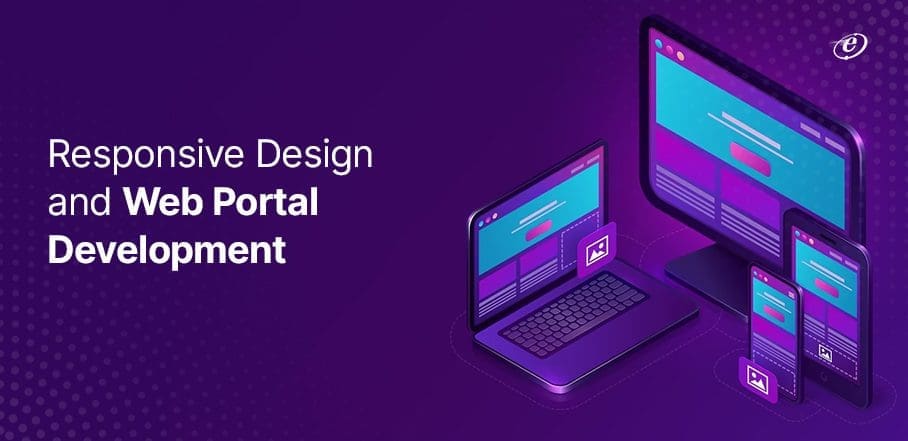
Why UX design principles are important in planning Front End Development?
The process through which design teams build products that give consumers meaningful and relevant experiences is known as user experience (UX) design. This includes features of function design, branding, usability, and function, as well as the complete process of obtaining and integrating the product. When you utilise a major corporation’s app or one of its products, you’ll come across UX design concepts. UX is also responsible for making a website simple and entertaining for general use.
Donald Norman’s The Design of Everyday Things was published in 1988, and it is widely considered to be the beginning of UX design. Norman, who was the head designer at Apple at the time, used the book to highlight the complexity of the design of products that are sometimes misunderstood. UX design has evolved since then, and it is currently the dominant form of thinking about user-centered design.
Despite the concept’s ubiquity, many designers are still unfamiliar with the fundamentals of UX design; in fact, there is an ongoing disagreement on how to define the word. Often designers have a vague concept that UX design is about putting the user first, but implementing this principle into reality can be tricky. To solve these complexities it would always be wise to hire frontend developers from a Top front-end development company having experience in developing similar user experiences.
We’ll walk you through the most fundamental UX design concepts and show you how to apply them in your design process.
User Centricity
The most fundamental concept in UX design is to focus on the user, which forms the basis for all of the other ideas we’ll cover in this article. This principle is at the heart of UX design because it helps to address common problems in your website design: as designers become more adept at working with complex web design frameworks, they may find themselves designing websites that are more concerned with impressing peers than providing a great experience to real-life users.
The great design was always about elegant balances of form and function, and by including user experience in your website design as early as feasible, you can create a truly user-centric site. This approach requires a thorough consideration of how your users will interact with your website and the most common actions they will do on it, as well as keeping these important issues in mind throughout the design process. A seasoned custom web application development company can help you design a great user journey.
The most practical use of this theory for web designers will be determined by the type (and size) of the company for which you work. If you have the luxury of a specialized UX research team, this will include close collaboration with them. Smaller businesses may have to develop their own user feedback tools (more on that below). Regardless of which technique you adopt, user-centric design necessitates a continuous cycle of design and feedback, with one process informing the other.
Consistency
Consistency is a more particular aspect of UX design that is incredibly crucial when it comes to creating a successful website. Consistency, in its broadest definition, refers to the consistency of your designs and functioning throughout all of your sites and products. However, it’s also crucial to note that many of the most popular and successful applications and websites employ similar user interface patterns, whether in terms of button placement or how menu systems “flow.”
As a result, people will arrive at your website with a preconceived notion of how things “should function,” which must be respected. While you should avoid copying your rivals’ applications and websites, users respond favorably to pages that appear familiar, according to research.
Thus, building an interface that resembles market-leading websites might make it easier for your consumers to traverse your pages. This is because the more familiar your website seems, the easier it will be to utilize and the smoother the experience will be for your users.
Three methods should be used to put this theory into practice. The first is that you should think about all of the ways your visitors interact with your site and utilise the same design for all of them. This entails tying your website’s design to your apps and online commerce. You can hire dedicated developers or frontend development services who will provide you with technologies that will enable you to conduct this type of integration.
Second, you should resist the urge to try out fresh, insane concepts. While web design innovation is crucial, it should never come at the expense of usability. Third, you may use a “design language” to keep your designs consistent: Apple’s Human Interface Guidelines and Google’s Material Design Guidelines are notable examples of design languages.
Hierarchy
Another important aspect in UX design, but one that is sometimes overlooked, is a hierarchy. A hierarchical approach to design, at its most basic level, is considering all of the functionality and information that your website will have, and then translating this into a tree-like structure in which each part of your website flows “naturally” from the previous. If done correctly, your website’s pages will flow so effortlessly from one another that your hierarchy will be almost invisible.
There are several benefits to using this strategy early in the design process. One benefit is that it will make it easier for your users to explore your site and locate what they’re looking for. As a designer, it’s also crucial because it serves as a guide to exactly how your website functions
This may make your job as a designer a lot easier, as you won’t be tempted to keep adding new
plugins and themes to your site to do something that can be done much more quickly with a rational design approach. “A Good design will be as little design as needed,”
The establishment of an information hierarchy should be the first step in implementing the concept of hierarchy in web design. This information may then be used to make a site map. This site map should include everything you wish to include on your website and should allow for a simple, attractive menu system to be implemented. You may then create a design hierarchy based on this site map that interlinks your pages in a logical and consistent manner.
Context is key
Context is an incredibly crucial component of how people engage with your designs, according to one of the fundamental insights supplied by the UX design method. In this context, context implies paying close attention to which devices will be used to visit your website, with a special focus on the fact that mobile browsing is now the most popular method of access.
Paying attention to a wide range of additional aspects is also part of contextual design. Your design may seem great when you’re sitting in a nice, quiet office, but it’s possible that your users may engage with your site in a completely different setting: at work, on their lunch break, or at a loud club.
There are two main approaches to include a contextual approach into your design process in practice. One way is through user surveys like the ones we described before, which are an important aspect of modern UX design techniques. Another option is to conduct some “ethnographic” study by placing your web pages in the same environment as your consumers. It could be time for a revamp if you can’t read your website at a smoky bar.
These issues have lately been defined as the related concept of “emotional design.” This method may be used in conjunction with other UX design concepts to emphasize the emotional content of your designs. The primary insight presented by the concept of “emotional design” is that users anticipate distinct emotional “flavours” based on when, how, and where they use web pages (and applications, etc.). Paying attention to these expectations may have a big impact on how well your designs are received by people.
Place the user in control
Another important aspect of the UX design process is putting the user in charge. There was a general apprehension a decade ago about giving consumers a significant amount of power over the online sites and programmes they used, due to a popular belief that they would break them. However, one of the most important discoveries of two decades of UX research is that providing the user more power leads to a better experience.
This isn’t to argue that you should hand over entire management over your web pages to your users. Too much information might be overwhelming for new visitors, therefore no matter how many complex features you offer, your website should remain simple to use. However, you must keep in mind that, depending on the type of website you’re creating, it will need to operate for both power users and average customers. These sophisticated features might be hidden in a different section of your site, but they should always be accessible to people who want to utilise them.
But first, a word of caution. While offering consumers more power would improve their experience, there should always be an “emergency exit” from these sophisticated settings. To put it another way, there is a delicate balance to be achieved here. Always include confirmation boxes to ensure that users do not inadvertently ruin their session, as well as a “reset” button to allow them to revert to your site’s default settings.
Usability testing
The final UX design principle is inextricably linked to the first. Implementing a user-centric design strategy entails discussing your users early in the design process, but your interaction with them should be considerably more extensive. You’ll need to implement a continual, rigorous method of usability testing to guarantee that your web pages are functioning properly for your users.
The most important thing to remember is that the design process does not end after your webpage is published. Instead, design is an iterative process in which you continually strive to understand how visitors interact with your web pages and use that information to enhance them. This is especially critical for developing businesses, whose websites may rapidly become ineffective as new features are added, and whose designs might suffer from poor website performance as more content is added.
Conclusion
You’ll note that the majority of the UX design principles above come from the first UX design concept we mentioned: concentrating on the user.
This isn’t just a coincidence. UX design procedures are valuable because they understand a fundamental reality about web design: you are not developing your website for yourself, but for your users. What is clear to you may not appear so to your users, and many web designers may discover that their users engage with their designs in unexpected and unintended ways.
If UX design can be reduced to a single concept, it is this: website creation should be regarded as iterative web design, in which user feedback is used to guide the site’s development. As a result, site designers should strive for as strong a relationship with their users as possible, and keep in mind that some of the greatest design in the world is useless if your consumers can’t utilize it.



